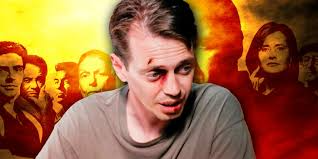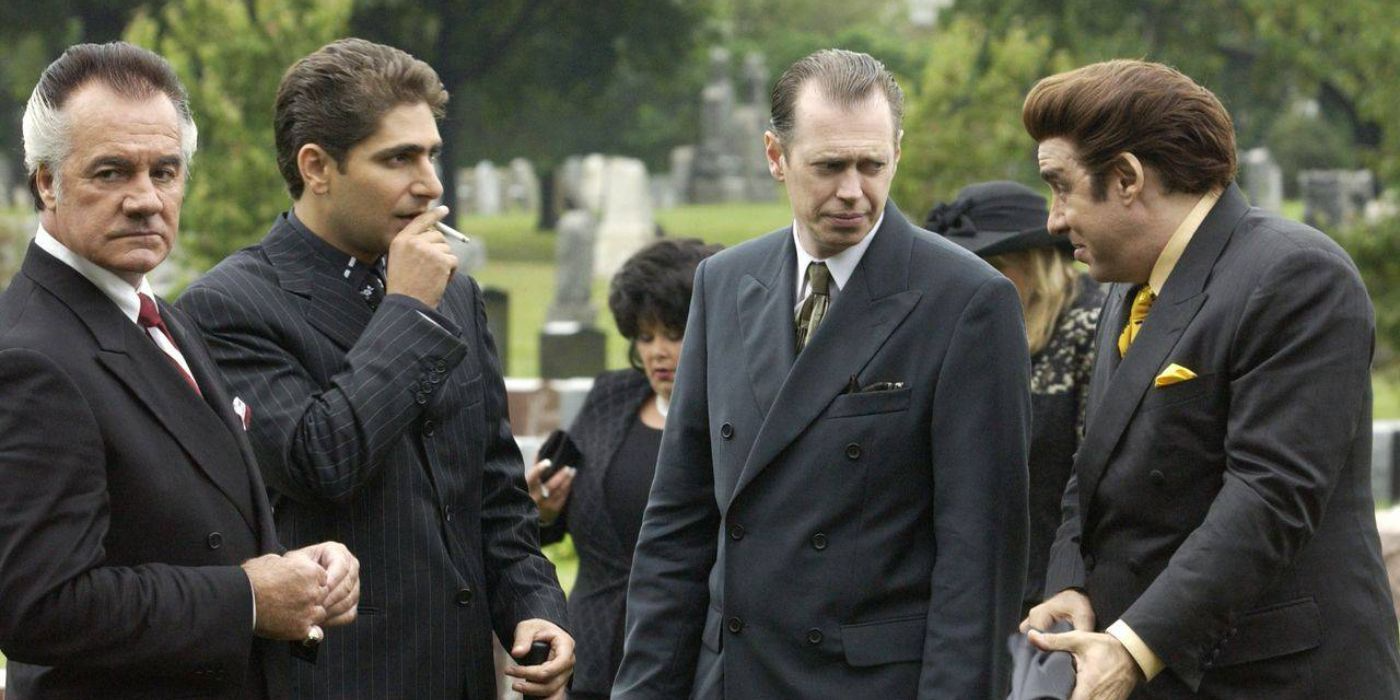
They may seem completely different on the surface, but the worlds of television and film are more interconnected than most fans realize. Filmmakers can make great television shows, and television show creators can crank out a great feature film, because, at the end of the day, entertainment is entertainment. It is very common for new TV shows to cite previously successful programs as inspiration, but it is also possible for shows to be inspired by feature films. One of the most relevant examples of a movie inspiring a show came in 1996, when a highly underrated Steve Buscemi movie sparked something in the mind of David Chase.
1996 saw the release of Trees Lounge, a laid-back comedy-drama that almost lacks a discernible plot. The film can only be described as a Steve Buscemi masterclass, as he wrote, directed, and starred in the film alongside a beautifully deep ensemble cast. From the cast, to the ending, to the emotional backbone, there are numerous connections between Trees Lounge and The Sopranos that cannot be ignored. While The Sopranos has been immortalized as one of the greatest television shows ever made, Trees Lounge has fallen by the wayside, and that has to change.
What is Trees Lounge About?
Trees Lounge is an underrated entry into the long lineage of hangout films. While it fits neatly into the free-flowing niche of hangout cinema, it simultaneously offers a distinctly different style that will feel like a breath of fresh air to fans of the subgenre. The average hangout film features young people on the brink of moving up in the world. The films will follow free spirits who are on a quest for one last hurrah before they ascend into adulthood (American Graffiti, Dazed and Confused, and even later in life stories like Return of the Secaucus Seven). Trees Lounge offers none of that. Instead, low lives, losers and otherwise miserable people fill the titular Trees Lounge bar, and there is no inkling of upward mobility to be seen.
The film primarily follows Tommy, a too-far-gone alcoholic who is recently out of a job. Tommy spends most of his time at the local bar, Trees Lounge, interacting with the barkeeps, patrons, and passersby who still fall victim to his recyclable charm. Still reeling from the loss of his girlfriend and steady job as a mechanic, Tommy begins to drift through life without a sense of purpose or any sense of drive.
At some point during his downward spiral, and after many failed attempts at recouping his job and girlfriend, Tommy takes a job driving the local ice cream truck previously owned by his deceased uncle. While working his new gig, Tommy begins to feel forbidden sparks with Debbie, his ex-girlfriend’s 17-year-old niece. This growing attraction, combined with Tommy’s constant exposure to other alcoholics on the brink, leads to an unfixable sense of disillusionment and depression. Karma eventually catches up with Tommy, leading to a confrontation with Debbie’s Dad that turns violent, and alters Tommy’s trajectory in life.
Trees Lounge doesn’t offer grand sweeping resolutions, nor does it seek to. The film is a depressing character study of a singular lonely man stuck in an unmistakably bleak Long Island setting. The film paints a portrait of Tommy as he is completely trapped in an endless cycle, surrounded by others just like him. Trees Lounge dissects depression to the bone with a bittersweet hangout story that constantly teases a happy ending. It perfectly balances the monotony and gloom that comes with working-class life, but does so with empathy, hilarity, and a soft touch.
Trees Lounge is also notable for being the directorial debut of Steve Buscemi. While the prolific actor may be more known for his stunning character acting performances, he has also proven himself to be a talented writer and director. From Trees Lounge, to Animal Factory, to his 2022 film, The Listener, Buscemi has a clear and definitive style that has gone sadly unnoticed in indie film circles.
Trees Lounge Has a Stacked Cast
Despite primarily focusing on one main character, Trees Lounge features a horde of great performers that pop in for a scene, or two, or three. Buscemi, with the help of the casting directors Sheila Jaffe and Georgianne Walken, crafted a pitch-perfect ensemble cast full of brilliant performers that perfectly emphasized the dreary setting that he was shooting for.

Steve Buscemi portrays the lowest of the low lives, Tommy, in what many consider to be the greatest performance of his career, but he didn’t do it alone. The nod for best performance aside from Buscemi has to go to Chloë Sevigny, who portrayed Debbie in the film. Sevigny’s young and impressionable flirty behavior as Debbie served as the perfect setup for Tommy’s eventual final downfall. She perfectly blended agency and naïveté, and deserves much of the credit for the film’s endlessly powerful ending.
The ensemble surrounding these two leads is full of heavy hitters as well. Samuel L. Jackson pops in briefly as Wendell, mocking Buscemi in a way only he could. Three stars of The Sopranos (aside from Buscemi) appear in the film: Michael Imperioli, Elizabeth Bracco, and John Ventimiglia. Trees Lounge even features performances from Oscar nominees for underrated classics, including Carol Kane of Hester Street fame, and Seymour Cassel, who was nominated for Faces.
Every single member of the Trees Lounge ensemble comes to play with an attitude perfectly suited to the hopeless Long Island suburb. From the uneventful hangout vibes of the local bar, to the feigned small town peace that comes at a children’s baseball game. Trees Lounge has a hazy, but potentially romantic, exterior, and a black-hearted and bleak interior, and all the credit for that feeling goes to the perfectly assembled cast.
Trees Lounge Was a Direct Inspiration for The Sopranos
It may not seem obvious to most fans on first watch, but Trees Lounge had a massive impact on David Chase’s eventual masterpiece, The Sopranos. The film was released three years prior to the debut of The Sopranos on HBO, but it coincided perfectly with Chase’s initial development of the show, which took place around 1995 and 1996. The obvious examples of programs and movies that inspired The Sopranos are Goodfellas, The Godfather, and one of Chase’s favorite shows, Twin Peaks, but it seems that inspiration was drawn from even small independent outings.
David Chase drew inspiration from Trees Lounge in two key ways. He sought to emulate Buscemi’s film in terms of vibe and small-town behavior, and also sought to emulate Buscemi’s incredible knack for casting lowlifes and seedy civilians. In the novel, The Sopranos Sessions, Chase shared his admiration for the film’s unmistakably bleak vibe, saying: “I loved that movie [Trees Lounge], I thought it was so well-directed and clear, and not baroque or anything like that.”
Chase also shared that he thought Buscemi was “a still largely unsung hero of indie film directors,” and he couldn’t be more correct. Suburban malaise and alienation may be a more accurate descriptor of Trees Lounge than The Sopranos, but it is undeniable that there are bits and pieces that feel similar.
The second way that the two films connect concerns the cast and crew of the film and television show. While Buscemi’s involvement in both projects is obvious (as he both directed episodes of The Sopranos and starred in 13 episodes), the connection goes far deeper than this. As previously mentioned, there are three cast members, Michael Imperioli, Elizabeth Bracco, and John Ventimiglia, who cross over between both shows, but the credit for that connection doesn’t fully go to David Chase.
From the jump, David Chase knew who he wanted to run the casting room for his program, and it all started with his love for Trees Lounge. Chase hired the previously mentioned Sheila Jaffe and Georgianne Walken, who ended up serving as the casting directors for all 86 episodes of the illustrious show. This unstoppable duo used their wealth of industry knowledge and Trees Lounge connection to cast the show.
Without this connection, there would be no Christopher Moltisanti, there would be no Artie Bucco, and there would be no Maria Spatafore. Lastly and most importantly, without this connection, James Gandolfini may have never been Tony Soprano. Without Steve Buscemi’s incredible directorial debut, The Sopranos as we know it may have ceased to exist. Fans of The Sopranos, hangout films, or Steve Buscemi would be remiss if they didn’t check out this highly underrated indie outing from 1996. Trees Lounge may not have the action and drama of the mafia films and television shows that fill the airwaves and cinemas today, but it has an unmistakable and undeniably charming vibe that will have even the most stone-faced viewer smiling and crying.
